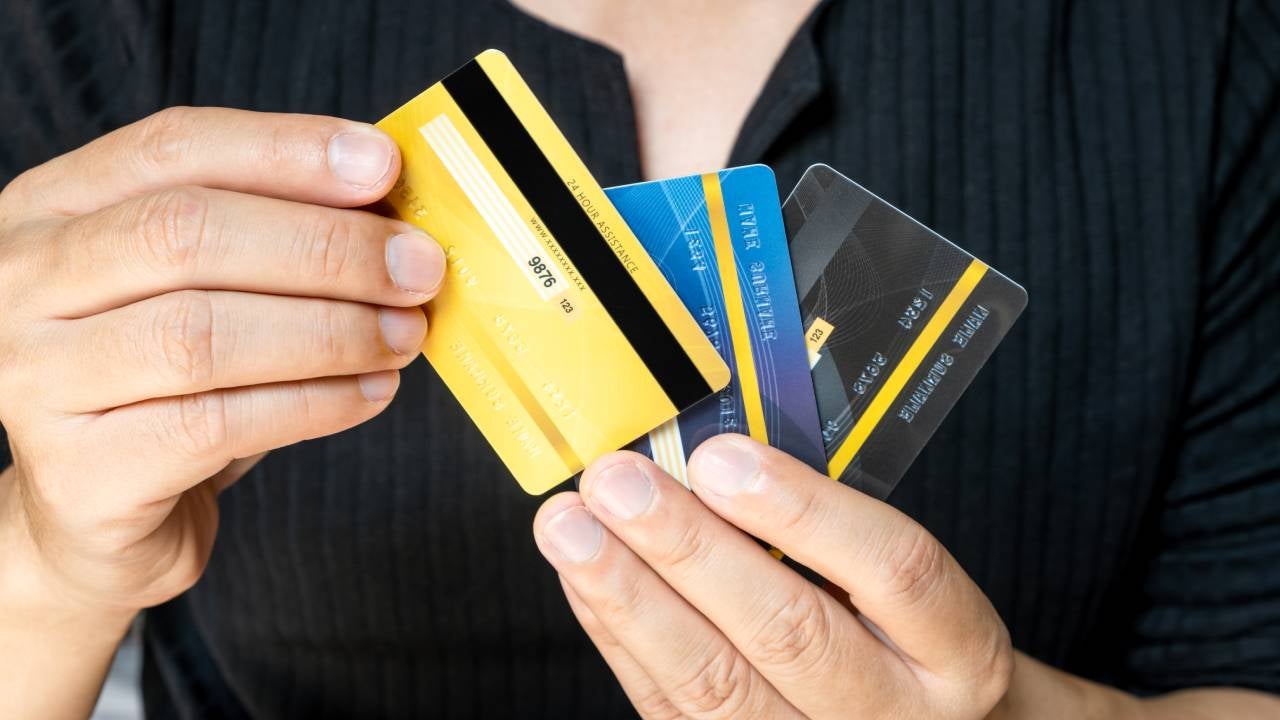Americans owe a near-record $1.209 trillion on their credit cards, according to the New York Fed’s latest Quarterly Report on Household Debt and Credit. That’s up $27 billion (2.3 percent) from last quarter and $67 billion (5.9 percent) from a year ago. The all-time record is $1.211 trillion from Q4 of last year.
Credit card balances have risen from the first quarter to the second quarter in 12 of the past 13 years; the only exception was 2020, when the COVID-19 pandemic disrupted just about everything. Balances usually fall from the fourth quarter of one year to the first quarter of the next (as they did this year), since Americans make New Year’s resolutions to pay down debt and many use tax refund money for debt payoff as well. In the second and third quarters, balances usually rise modestly before spiking in the fourth quarter thanks to holiday spending.
What’s happening with credit card balances in 2025
This year seems likely to follow the typical pattern, even as considerable uncertainty weighs on consumers’ minds (regarding tariffs, recession worries, a high cost of living and so on). A prominent theory continues to be that hard data (measurements of consumer spending, economic growth and the job market) is outpacing soft data (surveys of how consumers feel about financial issues).
It’s important to point out that the New York Fed’s report tallies Americans’ credit card balances at a moment in time (typically their statement dates) and does not distinguish between credit card bills that are paid in full (thereby avoiding interest) versus cardholders who carry debt from month to month at an average interest rate of 20.13 percent.
Bankrate’s latest Credit Card Debt Survey revealed that 46 percent of cardholders carry debt from month to month, while 54 percent pay in full. For the latter group, credit cards represent a great way to earn rewards on everyday purchases and access buyer protections such as extended warranties and travel insurance. But for the balance carriers, credit card debt can be a tough hole to dig out of.
Rising balances aren’t all bad
Rising credit card balances can indicate rising credit card debt, but not necessarily.
Credit card balances can be expected due to population growth, economic growth and the continued migration from cash to digital payment methods such as credit cards. In other words, perhaps balances have gone up because people feel comfortable spending more. At the household level, it’s important to pay your credit cards in full each month if at all possible.
TransUnion says the average credit card balance is $6,371. If you only make minimum payments at the average rate of 20.13 percent, you’ll be in debt for 217 months (more than 18 years) and will end up paying $9,259 in interest (plus the $6,371 you charged in the first place).
How to pay off credit card debt
First, don’t be ashamed — you have plenty of company. And credit card debt usually has practical causes (medical bills, car repairs, home repairs and day-to-day expenses). But it’s probably your highest-cost debt, so it’s one to prioritize. Here’s how to do it.
Balance transfer cards
Consider moving your high-cost credit card debt over to a new card with a generous 0 percent balance transfer promotion. The longest offer on the market right now is U.S. Bank Shield™ Visa® Card’s 24 months with 0 percent interest on balance transfers and new purchases. After that, the variable APR becomes 17.74% – 28.74% Variable, depending on the cardholder’s creditworthiness. Also note the transfer fee (5 percent or $5, whichever is greater).
Remember that minimum payment scenario involving the average credit card balance and the average interest rate? Well, instead of lugging around your debt for more than 18 years at a total expense of more than $15,000 (including principal and interest), you could pay about $265 per month to knock out the average balance ($6,371) within two years — including the transfer fee and avoiding all interest, thanks to a 24-month balance transfer promotion.
Nonprofit credit counseling
A solid backup plan, especially if you have a lower credit score (below, say, 680) or a lot of credit card debt (more than $6,000 or so), is nonprofit credit counseling. Reputable agencies such as Money Management International and GreenPath offer debt management plans along the lines of a 6 percent interest rate over five years. They charge nominal fees (for example, a $50 set-up fee and a $25 monthly fee) and can help you pay off your debt much more cost-effectively than that minimum payment scenario.
Up your income and cut your expenses
Any additional levers you can pull to increase your income and reduce your expenses can accelerate your debt payoff strategy. For example, about a quarter of U.S. adults have a side hustle, according to Bankrate’s 2025 Side Hustle Survey. Among them, they’re bringing in an average of $885 extra per month. If you were to put all of those funds toward the average credit card balance, you could pay it off in just over seven months.
I also suggest taking a hard look at your spending to find places to cut back. You don’t have to do this forever, but living more frugally for six months or a year could make a big difference to your financial situation. Cancel little-used subscriptions, eat out less often, discover cheaper entertainment options and so on.
The bottom line
Credit card balances are back on the rise after declining slightly in the first quarter of 2025. There’s an industry saying that credit cards can be like power tools — that is, really useful or incredibly dangerous, depending on how you use them. This report illustrates that sentiment perfectly.
If you pay your credit cards in full each month, you avoid interest and benefit from rewards and other conveniences. You don’t have true debt (even though your balances are counted toward the aggregate). But if you are carrying pricey credit card debt from month to month, forget about rewards for now and follow practical steps to pay off that debt once and for all. Get out of debt first, then chase rewards later on (since it doesn’t make sense to pay 20 percent in interest just to earn a few percentage points in cash back or travel rewards).
Have a question about credit cards? E-mail me at [email protected] and I’d be happy to help.
The information about the U.S. Bank Shield™ Visa® Card has been collected independently by Bankrate.com. The card details have not been reviewed or approved by the card issuer.
Why we ask for feedback
Your feedback helps us improve our content and services. It takes less than a minute to
complete.
Your responses are anonymous and will only be used for improving our website.
Help us improve our content
Read the full article here
















